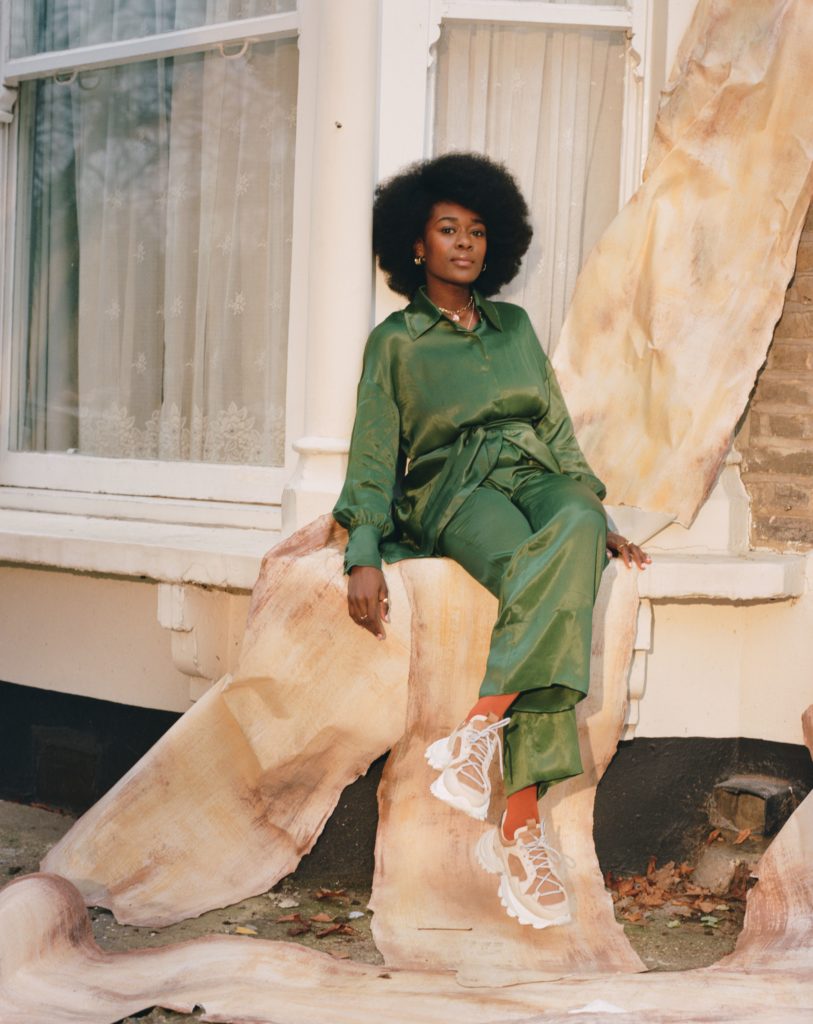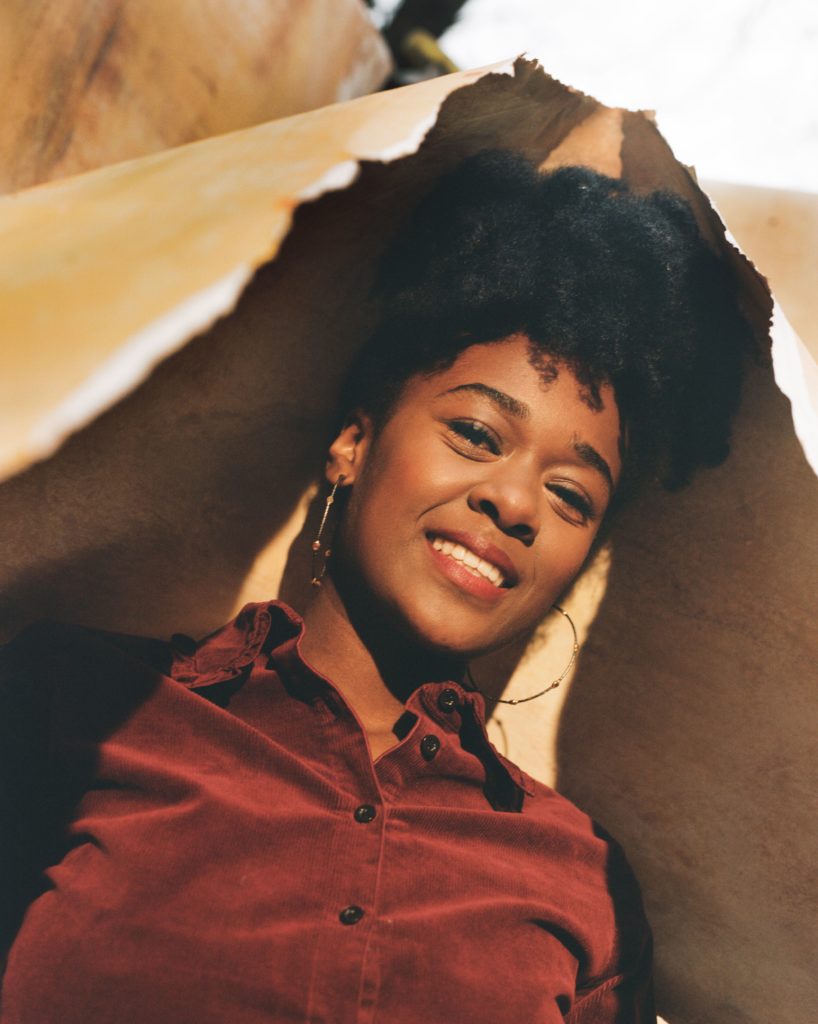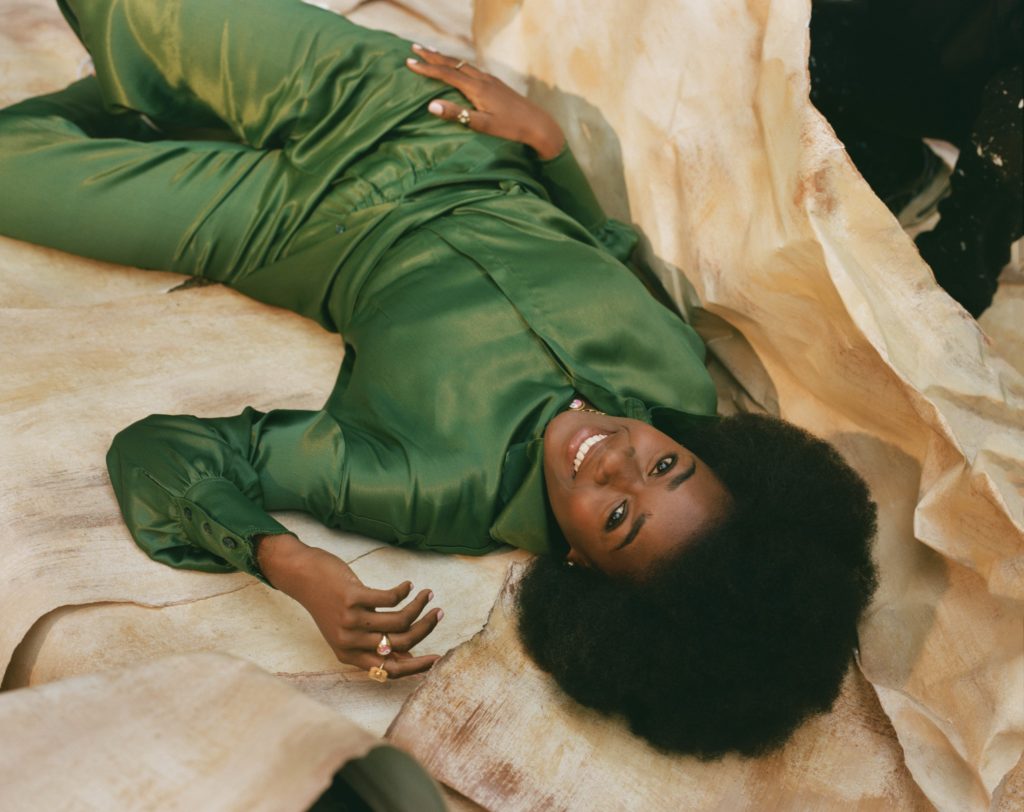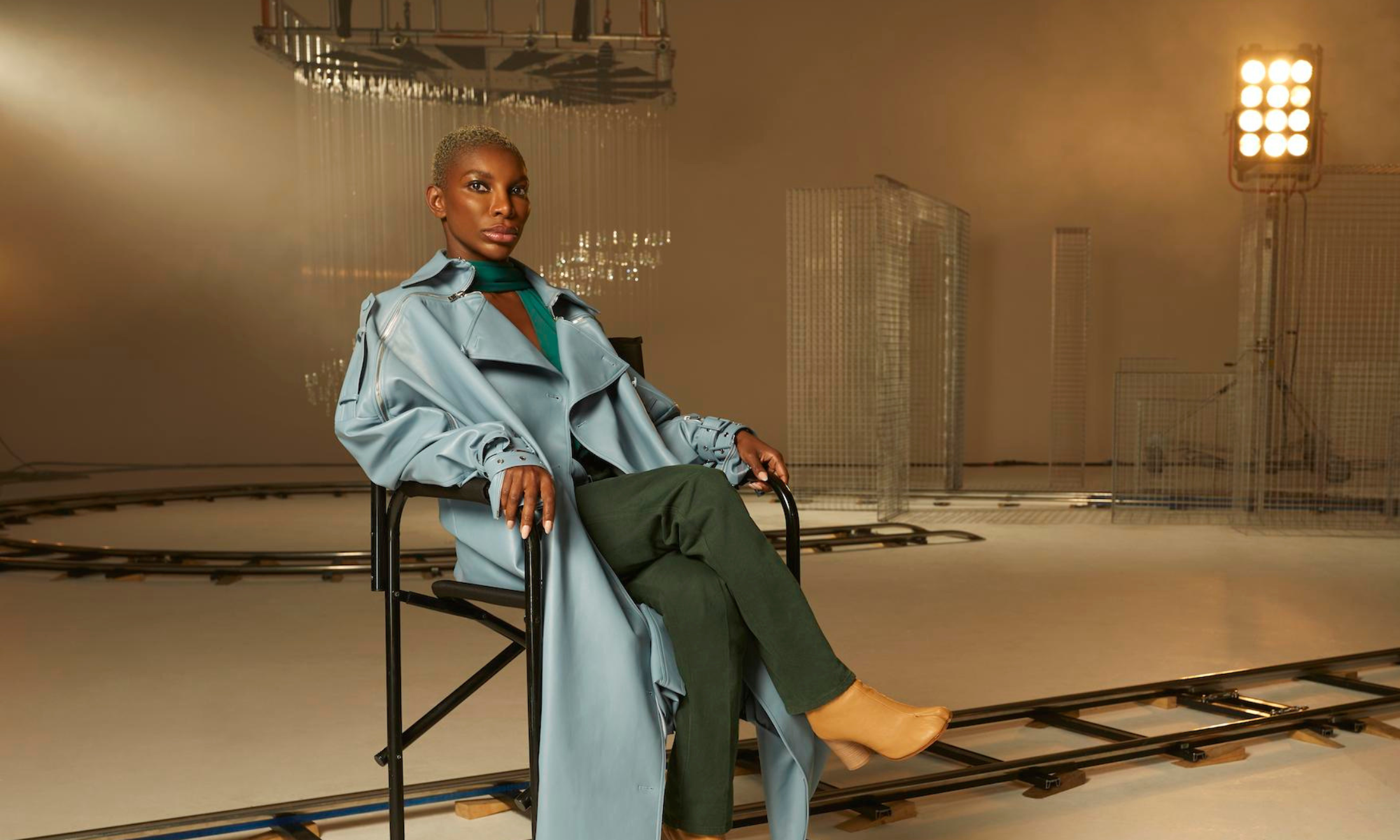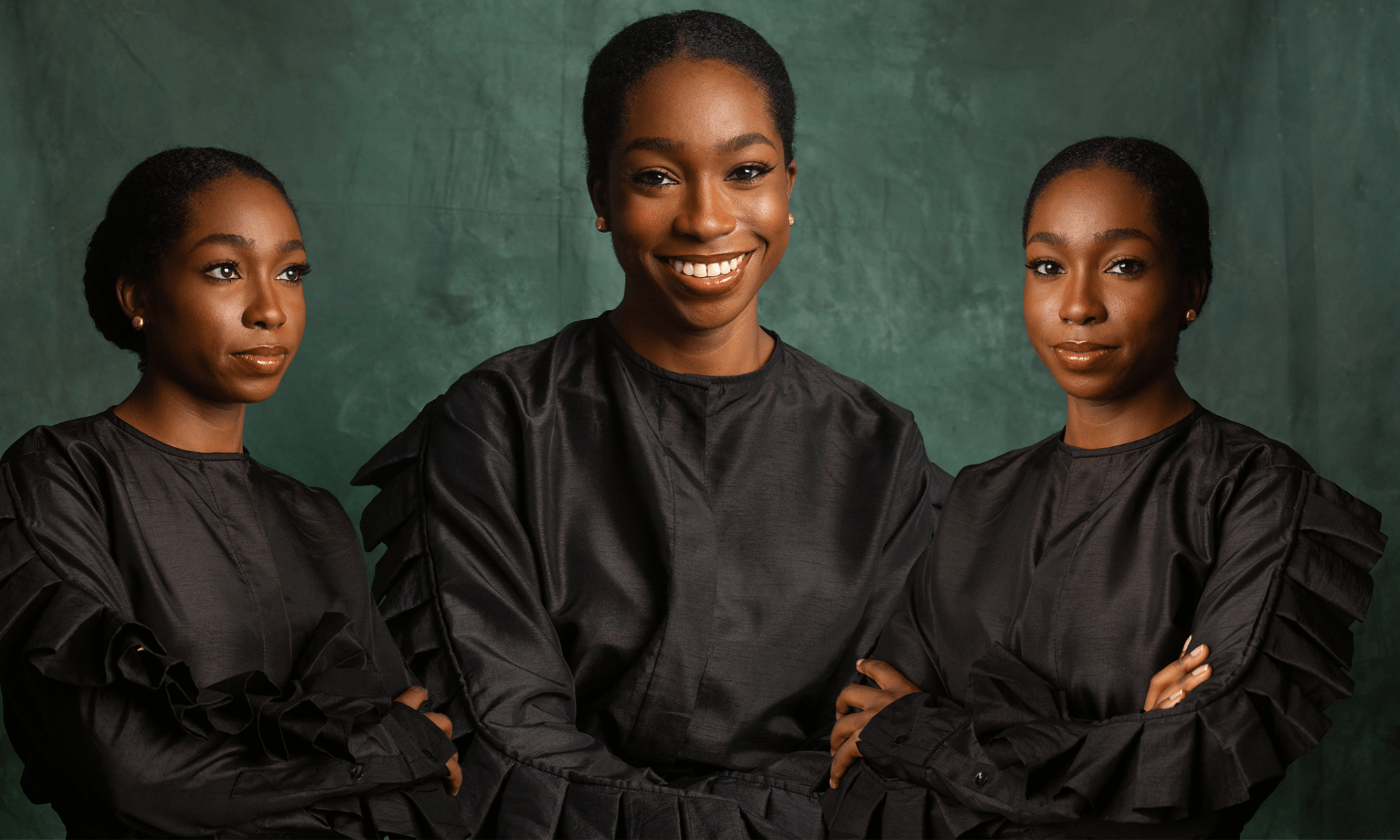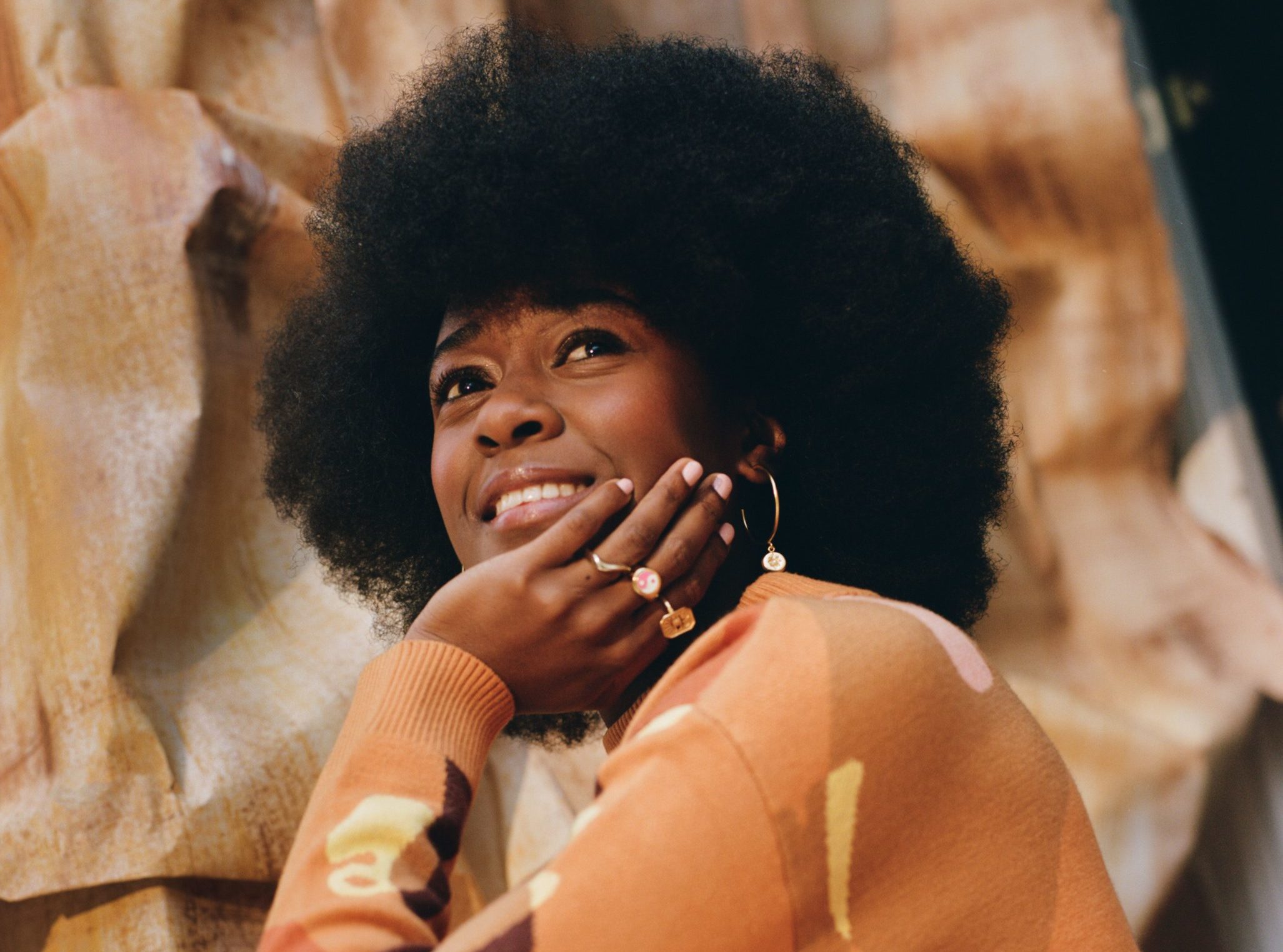
Nicole Ngai
How The Black Curriculum founder Lavinya Stennett went from school exclusion to changing the education system
The second of gal-dem’s 2020 community cover stars, the activist talks about the importance of rest and unity in her work to decolonise education.
Oluwaseun Matiluko
08 Dec 2020
Lavinya Stennett is an activist who likes to rest. “When you think of activists, you don’t really think of rest because we’re so used to this martyr syndrome of always doing and being the sacrificial lamb,” she says. But as well as exposing her to more emotionally exhausting work than ever before, the pandemic has taught her to be more gentle with herself. “I cannot come and kill myself”, is the saying that has become her motto for 2020.
I call Lavinya as the sun starts to set on an early November afternoon and she answers from her flat in Brixton. She’s wearing a white fluffy robe, with her healthy afro tied up into a pony and is very upbeat. Her natural optimism immediately shines through. She’s been embracing the second lockdown by getting stuck into her hobbies and her proactive, sunny attitude explains why, when Google Meets starts glitching during our interview, she’s already sending a Zoom link from her pro account. She always seems to be one step ahead.
Hearing Lavinya, or “Lavs” to her friends, excitedly recount her experiences from this year is joyful. The 23-year-old was recently featured on the cover of the September issue of British Vogue, which she celebrated by having a “small drink up” with friends, and she has seen her social enterprise, The Black Curriculum, go from strength to strength.
“It took off during Covid,” she tells me. “Which is one of the wildest things because for many people it has been a tragic year… but for The Black Curriculum, it’s changed, but in a good way.” The Black Curriculum was only officially registered as an organisation last year, but while they started off June with 1500 followers on Instagram, by the end of June they had over 130,000.
Indeed this year, The Black Curriculum has attracted a number of influential followers and recently appointed famed historian David Olusoga as a patron. The organisation, which in Lavinya’s words aims to “empower all students with a sense of identity and belonging,” provides school and teacher training, school assemblies and curriculum consultation, all online now due to Covid.
Green silk belted shirt and trousers by Muse for All, socks by Falke, shoes by Soho Grit, Ying Yang necklace and ring by July Child, earrings and wave ring by Ruddock Jewellery, square ring by Ottoman Hands
It’s bittersweet that so many people only caught onto The Black Curriculum’s work after George Floyd’s death and the wave of Black Lives Matter protests which took place this year. “We’ve been doing this work for nearly two years now and there’s been other people who have been singing from the same hymn sheet for the past 50 years. So why does it take for someone to die on camera for us to really have an interest in furthering something which is going to benefit everybody?” Lavinya says with frustration.
They were able to get at least 200,000 people to write to their MPs in June, calling for the Minister for Education, Gavin Williamson, to meet with The Black Curriculum and ensure that black history is mandatory in the national curriculum. Yet, those within the Department of Education first rejected The Black Curriculum’s attempt to meet and then came back to them saying “that they understood the work that we’re doing and that they’d love to meet us but because of Covid we can’t meet” Lavinya explains, giving me a characteristic side-eye.
“Why does it take for someone to die on camera for us to really have an interest in furthering something which is going to benefit everybody?”
As she elaborates, it is likely this government will never express support for The Black Curriculum’s work because “we’re living under a government that is not comfortable yet with notions of true equality. We’re in an environment where certain words are a trigger.” She points out Minister for Equalities Kemi Badenoch’s condemnation of critical race theory in the House of Commons earlier this year as an example. “Without being able to talk about our history truthfully, that mentions colonialism, that mentions the British past we can’t move forward properly,” she says.
Many people now do follow their work and while most press coverage has focused on the organisation’s work in raising awareness of Black British history, it’s worth noting that The Black Curriculum also covers subjects such as geography, P.E, law, sociology and more.
Aside from talking about The Black Curriculum, we laugh, sigh and gossip about all number of things during our hour and a half conversation. We talk about everything from how TV shows like That’s So Raven “slapped” back in the day, to how kids today have missed out on the magic of Nokia brick phones. Lavinya also reveals to me that she’s recently got into skincare and has been playing around with a few products, but is trying not to go overboard in fear of “messing up” her already extremely clear skin (even over webcam, she has an enviable glow).
Burgundy cord shirt and trousers by Yolke, Ying Yang necklace and ring by July Child, earrings by Le Monde Beryl, round filigree ring by Ottoman Hands, signet ring by Ruddock Jewellery
But it is when we start talking about her family, that her eyes really light up. It’s clear how close she is with them when she tells me the origins of her unique name. “My mum is really into wordplay, so when she looked at me, she thought of ‘loving ya’ then she was like ‘Oh! Loving ya…Lavinya!’ Hence the name,” she explains.
The South Londoner, who is very proud of being from “the capital of London”, is of Jamaican descent and has a fascinating family history. Her Uncle Boysie was the first person from her extended family to come over to the UK. He wasn’t a direct uncle but her grandmother’s cousin. “He came to the UK as a RAF soldier, in the very early 20th century,” Lavinya tells me. It was a time when many people from the British colonies were coming to the UK to further career and job opportunities and when racial discrimination within the military, and particularly the RAF, was rife.
After Uncle Boysie settled in Wimbledon, Lavinya’s 17-year-old grandmother came to London during the Windrush period. Now 96, she’s still “very strong and witty”. Although, according to Lavinya, she’s vague about what it was like to live in London before anti-discrimination legislation passed in the 1960s and before anyone could have imagined that we’d see MPs of Caribbean descent in parliament, a common attitude for those elders who have traumatic migration stories.
Lavinya is grateful to have been raised in such a connected family and the “close knit community” she found in West Norwood growing up. In fact, the first thing that comes to mind when she thinks of her childhood is being able to go outside and knock on anyone’s door if she needed help with her homework or someone to talk to. “I grew up on a road where Debbie up the road used to look after me,” she recalls. “I could just go down to Hazel and talk to her about school [after getting the 322 bus home]… I always felt like I had a community.”
“I was just very rowdy and I am very opinionated so I’d always be picked out for being the one that’s got too much to say or an opinion about something”
Surprisingly, this sense of community didn’t stretch to Lavinya’s school. Although she enjoyed life at her predominantly Black primary school, she fell in with a bad crowd at secondary school and was excluded twice from two different schools. She was first given a fixed-term exclusion in year 8 and was permanently excluded by the time she got to year 9, spending time at a Pupil Referral Unit (PRU).
“Long story short I was just messing around in school it was just very difficult for me to focus,” she says. “I was just very rowdy and I am very opinionated so I’d always be picked out for being the one that’s got too much to say or an opinion about something, which is not bad, but at the time it was a problem with the school environment.” A recent report found that PRUs often lead to the criminalisation of black schoolchildren, with Black Caribbean girls twice as likely to have fixed-term exclusions than the rest of the school population.
Eventually, around the age of 16, Lavinya followed a friend to South Thames College, where she began to regain her love of learning. As a young child, she adored reading encyclopedias because her mum would always tell her to use them when she was struggling with schoolwork. At college, Lavinya was able to find the same supportive atmosphere where she was encouraged to learn “for the sake of learning, not learning to please anybody”.
On one level it’s ironic that someone who was once excluded is now the leader of a prominent educational enterprise. However at college, where Lavinya tells me that she turned her life around she was able to attain the A-levels to do a BA in African Studies and Development Studies at SOAS (from which she graduated with first-class honours in 2019). Her dissertation was focused on Maroon ecology in Jamaica and Brazil. It’s unsurprising then, that The Black Curriculum is not just about embedding Black people within the national history curriculum but, as she explains to me, “throughout the whole curriculum”.
During her university years, which Lavinya looks back on with joy, she kept busy as one the two inaugural Working Class Student Officers at SOAS, ensuring that the institution provided bursaries, which Lavinya calls “reparations”, for working class students. She first came up with the idea for The Black Curriculum after going on a term abroad to New Zealand but, even prior to travelling, her experiences as a student really fed into her plans. She co-founded a student society called Art and the African Mind that provided a “hub” and “safe space” for many Black students. “We were doing things in the university and so I think The Black Curriculum was birthed by a lot of the influences I had around me,” she tells me. “And I remixed and repackaged a lot of those passions, as well as my experiences in New Zealand, to create The Black Curriculum.”
This desire to further racial equality and stand up for Black British people stems from her upbringing, where she developed a firm belief in “the unity of all Black people”. The music of Dennis Brown, Bob Marley and others have helped instill this belief in Lavinya, a self-confessed “old-head” when it comes to reggae. Over lockdown, she has particularly enjoyed listening to reggae as well as laughing along to The Receipts podcast and reading books like Beloved and Jazz by Toni Morrison. As we talk, she points out her copy of Walter Rodney’s How Europe Underdeveloped Africa on her bookshelf; a foundational text for her. Aside from the written word, she has recently found a new fondness for the early noughties show Girlfriends (on Netflix). Like most people under 25, she didn’t grow up with it but sees some aspects of her personality in Maya’s character, because she “keeps it real with all her friends”.
“I’m grateful for the people who have, stood their ground with me and believed in The Black Curriculum”
What else does Lavinya do when stuck inside all day? Journaling and cooking. She tells me, while flicking through a detailed record of her meals these past few months, that she’s made a lot of chapatis, plantain – “obviously” – rice and peas (she finally perfected her dad’s recipe) and gnocchi. She’s also somewhat of a sommelier, getting into wine during lockdown too. I cheekily ask her for a good supermarket recommendation and she tells me, half jokingly, half seriously, that “it all depends on what you’re going to pair it with”.
Lavinya now lives alone in Brixton, having moved out of the family home around five years ago. However, just like she had a community of “friendly faces” growing up in West Norwood, in Brixton she has been able to create a home away from home with her neighbours. During the first lockdown many of the people down her road came together to read the Bible and pray every Sunday. “My neighbours are Christians, so they brought their church to the road!” she exclaims with her characteristic sing-song laugh. For someone like Lavinya, who grew up in the Pentecostal Church and still regularly keeps up with her Bible App’s “verse of the day”, having neighbours like these has ensured that despite successive lockdowns she has never truly been alone.
Despite the rapidly growing media interest in Lavinya’s activism, she’s keen to remind me that The Black Curriculum did not come about due to her actions alone. “Even though I’m winning all these awards and stuff, I’m grateful more so for the people who have, even before this recognition happened, stood their ground with me and believed in The Black Curriculum and helped us as much as possible,” she says. “I want to use this platform to thank them for their commitment and their belief, it means a lot.” She feels particularly indebted to fellow activists Busayo Twins and Temi Mwale. Mwale’s work in particular, on combating youth violence, really caused Lavinya to rethink what her framework of justice looks like.
She certainly has a number of amazing people standing behind her. From her ancestors to the inspiring fellow activists she works with and is friends with, everyone wants to see Lavinya’s work succeed. The change-maker is building on a rich history of Black activism. As I end our Zoom call, I feel hopeful for the future, and for the many young people whose educational experiences have been and will be transformed by The Black Curriculum.
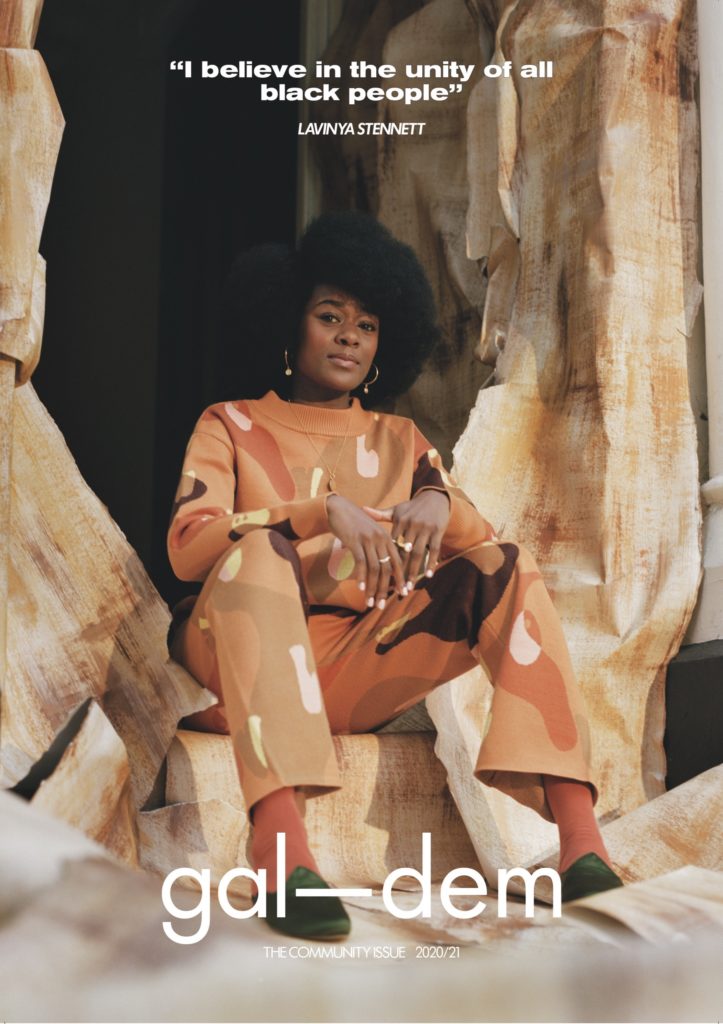
‘I believe in the unity of all Black people’ – Lavinya Stennett on solidarity and The Black Curriculum is the second release of gal-dem’s 2020 community covers. This year we’re saluting the people who have helped to foster, support, and build communities. You can support the gal-dem and purchase our beautiful cover prints here; they would make a great Christmas present!
PRODUCTION CREDITS
Photographer: Nicole Ngai
Set Designer: Ranya El-Refaey
Set Design Assistant: Hazel Low
Stylist: Amii Mcintosh
Hair/MUA: Ruth Campbell
gal-dem producers: Diyora Shadijanova, Bijal Shah and Charlie Brinkhurst-Cuff

Britain’s policing was built on racism. Abolition is unavoidable

How Pakistan’s Khwaja Sira and transgender communities are fearing and fighting for their futures

Their anti-rape performance went viral globally. Now what?


